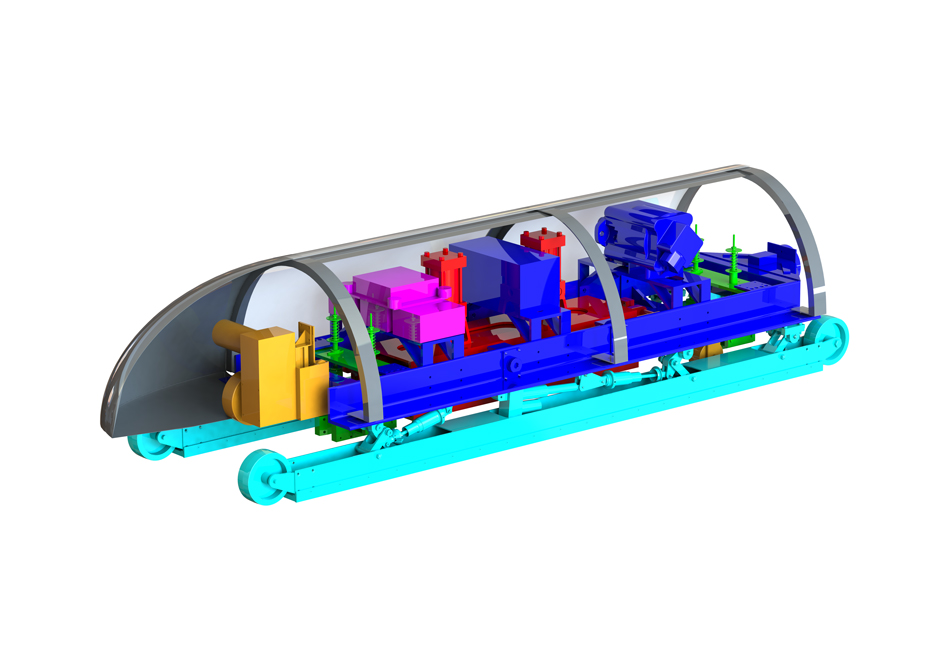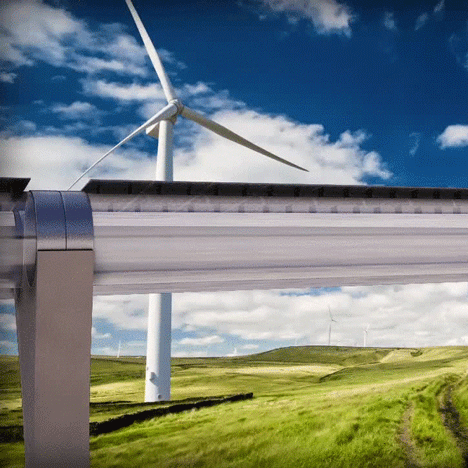A team from MIT has won a competition to design a levitating travel capsule for the Hyperloop – a futuristic, high-speed transport network conceived by billionaire entrepreneur Elon Musk.
MIT's design was announced as the winner of the SpaceX competition at Texas A&M University over the weekend.
Weighing only 250 kilograms, the MIT pod could travel up to 110 metres per second (360 feet) – 245 miles per hour – through Hyperloop's elevated tunnels using magnetic propulsion.
The MIT team beat 99 other groups from around the world, who all presented their conceptual designs for Hyperloop transport pods over the course of the weekend.
First proposed by Musk in 2013, the Hyperloop system would consist of a network of tubes. Passengers would be propelled in computer-automated, levitating capsules drawn by powerful magnets and vacuums.
A company has since been set up to realise the idea without Musk's direct involvement, but the competition for the pods was organised by Musk's SpaceX company to help "accelerate development of a functional Hyperloop prototype".
The MIT team comprises students and faculty from the fields of aeronautics, mechanical engineering, electrical engineering and business management.

Their pod's tubular shell is made of woven carbon fibre and polycarbonate sheets. Measuring roughly 2.5 metres in length and one metre in width (eight by three feet), the pod has a simple frame of large welded-aluminium rails that support the main internal components.
The strongest type of commercially available magnets, called neodymium magnets, would enable it to levitate above the Hyperloop track.
"The beauty of the system we designed is that it's completely passive, an elegant property that will make our pod very scalable," said team captain Philippe Kirschen, a master's student in aeronautics and astronautics.
The team also devised systems to keep the pod centred on the track, and able to traverse variations along its length.
The driverless pod will feature a modular electronics system that enables autonomous flight control and braking. A fail-safe braking system causes the pod to stop on its own if the motors or computers fail.
"In case of emergency, the pod will be capable of driving itself forwards or backwards at one metre per second using the pod's low-speed drive wheels," the team said.
The estimated speed of the design does not account for passengers or cargo.
Work on a Hyperloop test track began last November in Quay Valley, a proposed solar-powered city in Kings County, California. The area is home to the headquarters for SpaceX, or Space Exploration Technologies Corporation, which Musk founded in 2002.

The MIT team aims to build a small-scale prototype of its design and test it on the track this summer.
"MIT has been involved in so many technological breakthroughs in the past century," said Kirschen. "It just makes sense we would help advance what might be the future of transportation."
Musk first proposed Hyperloop as a supersonic transport system to link Los Angeles and San Francisco in just 30 minutes. The billionaire, who also owns electric car company Tesla, believes the network could be built within a decade.
Other recent developments in transport innovation include the US government's $4 billion plan to roll out self-driving cars and the unveiling of the world's first passenger-carrying drone.
Images courtesy of MIT Hyperloop team.
The post MIT students' bullet-shaped Hyperloop pod wins Elon Musk's SpaceX competition appeared first on Dezeen.

















